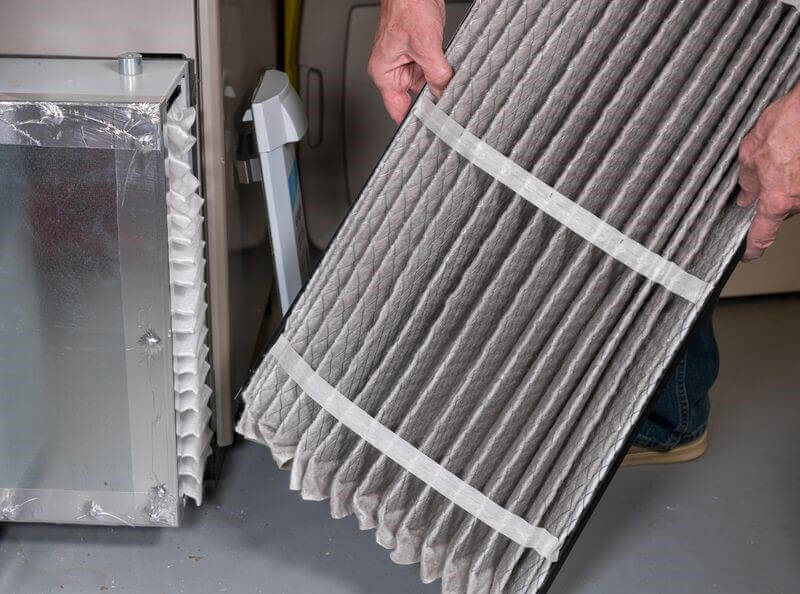Help You?
CLICK TO LEARN MORE ABOUT IRA REBATES AND TAX CREDITS
IMPROVE YOUR INDOOR AIR QUALITY WITH THESE FOUR HVAC PRODUCTS
Four Ways to Improve the Air Quality in Your Barrington, IL Home This Summer

Seasonal allergy sufferers and people with asthma know that warm weather brings some unfortunate side effects. It starts with those airborne allergens. Plus, when people are outside more, they’re tracking in more dirt and other contaminants.
But summer can be even worse. When the temperature really ticks up, you’ll close your windows and turn on your AC.
Sealing your house may be a good way to save money on air conditioning. But, you do that at the expense of healthy air circulation throughout your home.
The problem is that the air outside is actually better than the air inside. Indoor air pollution is a huge problem, especially when you keep your windows shut all the time.
Then, you’ve got all that pollen, dirt, germs, and even viruses from outside with no way to get back out. Plus, you’re building up VOCs — volatile organic compounds — from cooking, pet dander, and other indoor pollutants.
Back before air conditioning, the air in homes was much healthier because people used open windows and fans to stay cool. All that junk in the air washed outside.
Today, however, we spend so much of our time indoors. And, in the summer, we’re pretty much hermetically sealed inside.
Fortunately, you can have the best of both worlds: Cool air conditioning and clean, fresh air. You can get this balance by considering a few add-ons and improvements to your HVAC system.
In this article, we’re spotlighting four excellent ways to make your home more comfortable in the summertime. You’ll breathe easier and even save some money on your electric bills.
They’ll come in handy in the colder weather, too.
Four HVAC Add-Ons to Improve Indoor Air Quality
These four HVAC accessories will improve your indoor air quality in the summer:
- Stronger Air Filter
- Energy Recovery Ventilation (ERV) System
- Dehumidifier and Sump Pump
- Whole-Home Air Purification
Stronger Air Filters

They only cost a few dollars, and when you take them out, you’ll see all the dust and dirt they capture. Usually, the cloth screen goes in white and comes out grey.
For a few extra bucks each season, you can upgrade these to help make your air cleaner.
You want to look for filters with better MERV ratings. The higher this number, the smaller particles you’ll catch.
The stock one-inch filters are between MERV 1 and 4. They’ll do fine catching pollen, dust, and pet dander. But you can do better.
Go up to MERV 8, and you’ll trap mold spores, dust mites, and dander. The highest for residential use is 14, and those can even catch most viruses and even tobacco smoke.
After that, however, the filters are too strong for your system. You’d need much more pressure to force the air through. Without enough pressure, you risk damaging your system.
So, be sure you know your system’s capacity before upgrading.
Energy Recovery Ventilation (ERV) System

ERV circulates air from outside inside to your home using a negative pressure system. It transfers heat streams from one channel to another. And, it helps with the dehumidification process.
This way, your AC isn’t doing extra work by cooling air that’s just leaking out of your home. You only “lose” heat, not any of the cooling.
We posted a more in-depth article on ERV systems here. But, the bottom line is that it’s an all-in-one solution: Fresh air, dehumidification, and even air purification.
Dehumidifiers and Sump Pumps
But let’s start with the basement. That’s where the bulk of the moisture in your house gets in. Groundwater pushes against the foundation, making its way in little by little. It’s why you end up with a musty basement.
And that moisture affects the rest of your home. In the summer, your AC has extra work dehumidifying. But, if you have a traditional AC condenser, it’s not removing moisture when it’s not on.
Meanwhile, humid air makes it harder to breathe: Dust, pollen, and other contaminants hang in the air close to your nose and mouth.
Plus, the moisture makes it easier for mold and mildew to grow inside.
The one-two punch here is a sump pump and dehumidifier. The sump pump catches that water as it enters your home and gets rid of it. On top of that, you can invest in a whole-home dehumidifier that attaches to your central HVAC system.
This way, you’re not turning dehumidifiers on and off manually in various rooms of the house. A centralized unit cycles on and off as needed, just like your heater or AC.
Whole-Home Air Purification

The best of these models act, in part, like your air filter. As contaminants pass by, they neutralize them, so they don’t re-circulate through the house. But, these do much more.
More notably, they go on the offensive, purifying the air throughout your home. This way, you’re not waiting for dust, dirt, bacteria, viruses, and other pollutants to maybe make their way through the vents.
Instead, the purifiers use ionization and other reactions to reach every nook and cranny of your home. These contaminants have nowhere to hide this way.
Which Indoor Air Quality Tools are Right for My Barrington, IL Home?
If you’re ready to breathe easier, make your Barrington, IL home more comfortable this summer, start with a call to us here at Compass Heating and Air.
We offer free consultations along with video conferencing and other ways to communicate. Our first step is identifying the exact problems you’re experiencing. From there, we’ll work with you on a solution that’s just right for your home.

